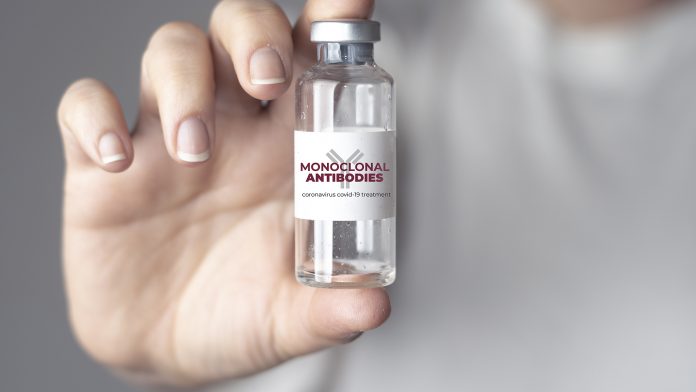
A new US study has revealed that people at the highest risk of severe COVID-19 infection are the least likely to receive the highly effective monoclonal antibodies treatment.
The novel research, co-authored by experts at the Harvard T.H. Chan School of Public Health, has found that those at the highest risk of death from COVID-19, such as those over the age of 65, are the least likely to receive monoclonal antibodies (mAbs), a powerful treatment for combatting the disease.
Michael Barnett, assistant professor of health policy and management at Harvard Chan School and lead author of the study, commented: “Monoclonal antibodies should first go to patients at the highest risk of death from COVID-19, but the opposite happened—the healthiest patients were the most likely to get treatment. Unfortunately, our federal and state system for distributing these drugs has failed our most vulnerable patients.”
The study, published in JAMA, received funding from the National Institute on Aging and the Agency for Healthcare Research and Quality.
Why are monoclonal antibodies used?
Monoclonal antibodies are traditionally administered to non-hospitalised COVID-19 patients with a mild to moderate infection; however, they have become in short supply during the pandemic. Guidelines in the US prioritise patients at the highest risk of hospitalisation or death from COVID-19, including the elderly and people with chronic conditions.
Due to the supply of monoclonal antibodies being limited at many stages of the pandemic, the Harvard team investigated how mAb therapy was allocated to patients at the highest risk for COVID-19. To conduct their investigation, the researchers analysed data from over 1.9 million Medicare beneficiaries in the US who had been diagnosed with COVID-19 between November 2020 and August 2021. They examined the data to determine inequalities in the rates of receiving monoclonal antibodies by age, sex, race and ethnicity, region, and the number of chronic conditions.
Treatment distribution
The team identified that only 7.2% of Medicare beneficiaries who were not hospitalised or died within seven days of their diagnosis received monoclonal antibodies. The likelihood of receiving monoclonal antibodies was higher for patients with fewer chronic conditions – 23.2% with no chronic conditions received mAbs compared to 6.3%, 6.0%, and 4.7% of those with 1-3, 4-5, and 6 or more chronic conditions, respectively. Furthermore, the researchers identified racial disparities, finding African Americans were less likely to receive monoclonal antibodies compared to white people – 6.2% versus 7.4%.
Location also played a significant role in how mAbs were prescribed throughout the US; for example, Rhode Island and Louisiana provided monoclonal antibodies to the highest proportion of non-hospitalised COVID-19 patients (24.9% and 21.2%), whereas Alaska and Washington administered the lowest (1.1% and 0.7%). The highest rates of mAb therapy were identified in the Southern states (10.6%), with the West having the lowest (2.9%).
The team stated that monoclonal antibodies might not have been provided to those at the highest risk of severe COVID-19 infection due to having difficulty navigating the steps required to access the treatment, such as receiving a timely diagnosis to referral and scheduling an infusion within ten days.
Barnett said: “We need new approaches to prevent these inequities from happening again with newer treatments on the horizon.”










